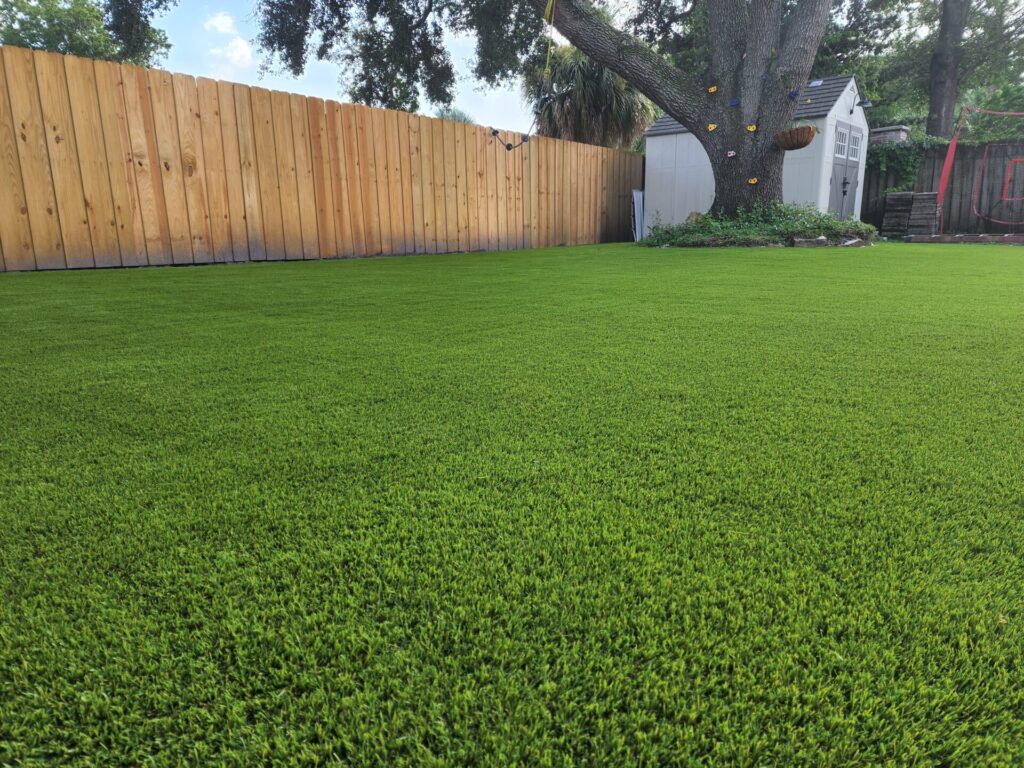1. Understanding the Types of Fake Grass: Before installing fake grass, it’s crucial to understand the different types available. Synthetic turf comes in various forms, including polyethylene, polypropylene, and nylon. Polyethylene grass is soft and realistic, ideal for residential lawns and play areas. Polypropylene is more affordable but less durable, making it suitable for decorative purposes rather than high-traffic areas. Nylon, the most durable option, can withstand heavy use and high temperatures, but it’s often the most expensive. Knowing the differences can help you choose the right type for your specific needs and budget.
2. Preparing the Installation Site: Proper site preparation is essential for a successful fake grass installation. This involves removing any existing grass, weeds, and debris from the area. The ground must be leveled and compacted to create a stable base. Installing a weed barrier fabric is recommended to prevent weed growth through the artificial turf. Additionally, a layer of crushed stone or gravel is often added to improve drainage. Ensuring the site is well-prepared will enhance the longevity and performance of your synthetic lawn.
3. Considering Drainage and Irrigation: While fake grass doesn’t require watering like natural grass, good drainage is still important to prevent water buildup. Check the drainage capabilities of the synthetic turf you choose, and ensure the installation includes proper grading and a drainage system. This might involve creating a slight slope or installing perforated pipes beneath the turf. Although fake grass eliminates the need for regular irrigation, occasional rinsing can help keep it clean, especially in areas with pets or heavy foot traffic.
4. Maintenance and Longevity: One of the main benefits of fake grass is its low maintenance requirements. However, it’s not completely maintenance-free. Regular brushing and infill replacement help maintain the grass’s appearance and prevent matting. Debris such as leaves and dirt should be removed periodically to keep the surface clean. If you have pets, clean up waste promptly and rinse the area to prevent odors. Understanding the maintenance needs of your artificial lawn will help you keep it looking great for years to come.
5. Environmental and Safety Considerations: Fake grass offers several environmental benefits, such as reduced water usage and no need for pesticides or fertilizers. However, it’s important to consider the materials used in the turf, as some can contain harmful chemicals. Look for products that are lead-free and made from non-toxic materials. Additionally, consider the impact of heat, as artificial grass can get hotter than natural grass, potentially posing a safety risk, especially for children and pets. Opt for products with cooling technology or consider installing shade structures to mitigate this issue.
By understanding the different types of fake grass, preparing the installation site properly, considering drainage and maintenance, and being aware of environmental and safety factors, you can make an informed decision and enjoy the benefits of a beautiful, low-maintenance lawn.
4714 Cypress Tree Dr, Tampa, FL 33624, USA
(813) 212-7160
